-
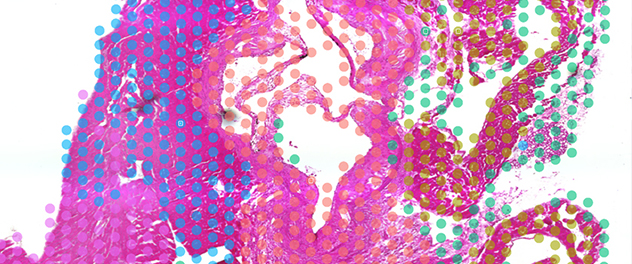
10x Genomics Standard Visium Direct Placement
Topographic whole-transcriptome profiling of the entire tissue region placed directly onto capture slides contains spatially barcoded oligonucleotides arranged in 55-µm spots. This sequencing-based platform requires frozen tissues for species agnostic compatibility.
-
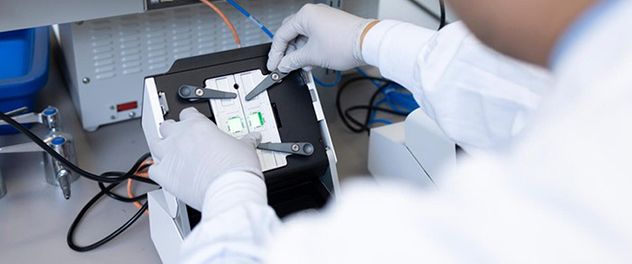
10x Genomics Standard Visium, CytAssist
Topographic whole-transcriptome profiling of tissues using human or mouse probes are transferred to standard Visium capture slides using the CytAssist device. This platform is sequencing-based and compatible with formalin-fixed paraffin-embedded (FFPE), fresh frozen and fixed frozen tissue slides.
-
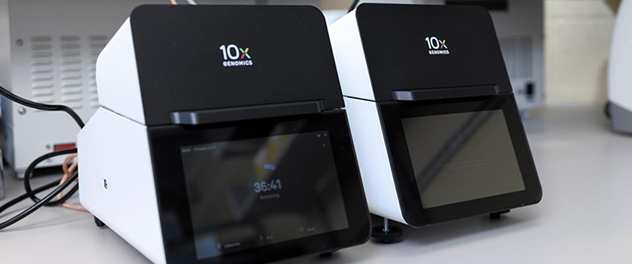
10x Genomics Visium HD, CytAssist
Topographic, whole-transcriptome profiling of tissues at single-cell resolution uses human or mouse probes that are transferred to high-definition Visium slides featuring contiguous 2 µm-by-2-µm capture areas using the CytAssist device. This platform is sequencing-based and compatible with FFPE, fresh frozen and fixed frozen tissue slides.
-
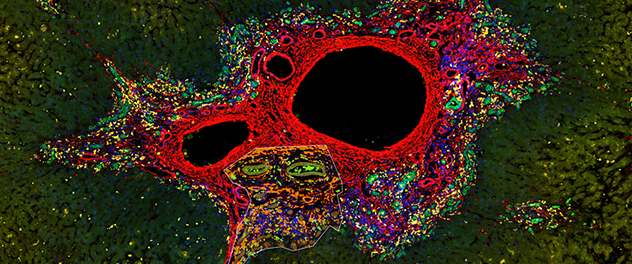
NanoString GeoMX Whole Transcriptome Atlas (WTA)
This whole transcriptome profiling uses human or mouse barcoded, photocleavable oligonucleotide probes. It requires identification of regions of interest that can be segmented based on morphology marker staining (up to three antibodies of choice plus nuclei stain). This sequencing-based platform is compatible with FFPE, fresh frozen and fixed frozen tissues.
-
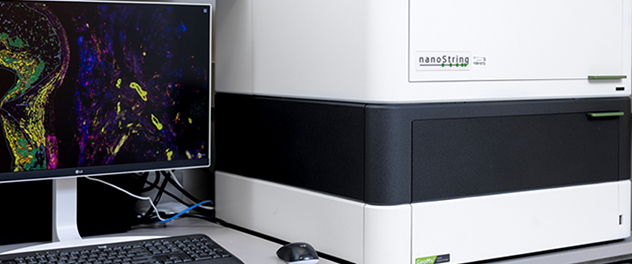
NanoString GeoMX WTA + Immuno-Oncology Proteome Atlas (IPA)
Human or mouse whole-transcriptome profiling is complemented with more than 570 photocleavable, oligonucleotide-tagged antibody targets that can be assayed in the same slide or separately. It requires the identification of regions of interest that can be segmented based on morphology marker staining (up to three antibodies of choice plus nuclei stain). This platform is sequencing-based and compatible with FFPE tissues.
-
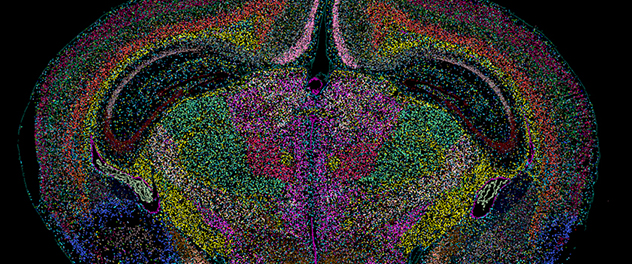
Vizgen Merscope
This gene-targeted, single-cell, imaging-based platform profiles the entire tissue region using probe-based gene panels. This platform is based on the multiplexed error-robust fluorescence in situ hybridization (MERFISH) technology. The custom probe design allows it to be used for any species. This platform is compatible with formalin-fixed paraffin-embedded (FFPE) or fresh frozen tissues.
Overview
The Spatial Multiomics Core provides cutting-edge spatial genomics, epigenomics and transcriptomics technologies and expertise. It supports patient-focused and experimental model-based biomedical discovery by developing and implementing integrated genomic, epigenomic and transcriptomic approaches to interrogating cells in their native tissue microenvironment and offering these technologies as a core service to Mayo Clinic investigators.
This full-service core assists investigators with all aspects of their project needs from consultation and experimental design through data analysis and delivery of materials for grants and manuscripts.
Project workflow
- An investigator submits an intake form.
- The Spatial Multiomics Core schedules a complimentary consultation with the investigator, core director and core manager.
- A project kickoff meeting is held with the core's team of spatial pathologists, technologists and bioinformaticians who help with the investigator's experimental design.
- The core executes on project deliverables, including coordinating with other core services on behalf of the investigator.
- The core assists with data analysis and interpretation, providing the investigator with meaningful spatial data deliverables.
Publications
View publications.